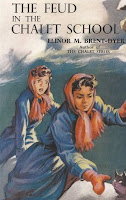 |
| (Amazon UK link) |
I’ve finally finished ‘Hooked’, whose subtitle is a rather more lengthy: ‘Write fiction that grabs readers at page one and never lets them go’. This demonstrates that it’s not a book about either fishing or addictions. Indeed, it’s quite a clever title. It’s a good book, too, although it took me a while to get into it, and then I kept forgetting to pick it up.
The focus is on, unsurprisingly, the first paragraph, scene or chapter of a novel or short story, and how important it is to get it right. The author gives a bit of historical background, reminding us how short an attention span modern audiences have, and also how many submissions editors get each month. To grab the attention of an editor, or indeed a reader in a shop, the first page must hook their attention and make them want to keep turning pages.
It’s a book of over 200 pages which was interesting enough that I kept on turning them… but not so gripping that I couldn’t put it down and forget about it. The writing is clear and I could see the author’s point - many times - as he shows us both good and bad beginnings to works of fiction. He explains the importance of the ‘inciting incident’, too, and how there must be some kind of conflict to keep people’s interest.
He also establishes the difference between a ‘story-worthy’ problem and an opening problem. There are some interesting points about plot development, and the importance of solving an initial difficulty, only to find oneself in a new and perhaps more difficult one which also relates to the overall story.
None of what was in this book was new to me. But I liked the way the author expresses the different kinds of problem and the importance of seeing the big picture of theme or ‘story-worthy’ problem running alongside events or minor conflicts that make up the bulk of a book.
However, I found it a little frustrating that the books and stories cited as examples were mostly ones I’d never heard of, many of them in the thriller or men’s fiction genres. That’s not unreasonable when the writer is a man, of course; but the kind of books I enjoy writing, many of which seem to be reasonable sellers, very often don’t follow this kind of pattern at all.
Anyway, it made an interesting read. I finished the second half much more quickly than the first. It has made me see the tremendous importance not just of the first sentence of a story, but the first page, and indeed the whole of the first scene. I may well dip into it again, and would recommend it to anyone starting out on fiction writing.
My personal favourite books about writing (sadly not all in print) are:
- Writing on both sides of the brain by Henriette Anne Klauser- Bird by bird by Anne Lamott- One way to write your novel by Dick Perry- Walking on water by Madeleine l'Engle- The five-minute writer by Margret Geraghty- Becoming a writer by Dorothea Brande- Back to creative writing school by Bridget Whelan- How to write and sell short stories by Della Galton- Writing great short stories by Margaret Lucke- Guide to fiction writing by Phyllis Whitney
Review copyright 2016 Sue's Book Reviews











